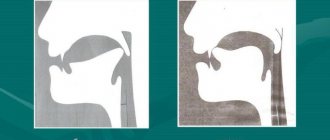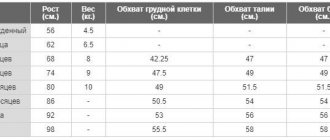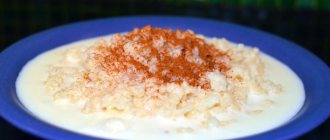The main type of equipment in alpine skiing is alpine skiing. When enrolling a child in a section, it is very important to choose the right skis so that the child feels comfortable on the slope and the lessons are only enjoyable.
Let's look at how to choose alpine skis for a child, as well as a helmet, boots and other equipment, what to look for and what standards need to be taken into account.
Types of alpine skiing
Many parents mistakenly believe that alpine skiing is divided only into sports and amateur. This is not entirely true. If you delve deeper into the topic, it will become clear that for each type of skiing for children there are different types of skis. Of course, if you are choosing skis for a child 4-7 years old who is just taking his first steps in the sport, amateur or all-purpose skis that are easy to control will suit him. But if a young athlete has already chosen a direction in alpine skiing, skis must be chosen in accordance with the requirements of the discipline and FIS standards.
Let's consider the most popular types of skiing and the necessary equipment:
- Freeride/Freeskiing/Big Mountain. These sports involve aggressive descent on unimproved terrain. These disciplines are characterized by high speed and complex jumps. Freeride/Freeskiing/Big Mountain skis are stable and easy to control at speed. These characteristics are possible with a camber of increased rigidity, as well as an increased length of the skis;
- Racing. This type of skiing involves downhill skiing on a specially prepared and marked track. Tough trails and high speed define the main characteristics of Racing skis. First of all, what is important here is the increased rigidity of the skis, which can absorb the serious loads of the athlete;
- All Mountain. This is an amateur type of skiing. All Mountain skis are versatile and are perfect for skiing on groomed trails and slopes with shallow snow. Choosing such skis will not be difficult, because they are available in every store and rental;
- Freestyle. An Olympic sport that requires endurance, courage and agility from the athlete. Freestyle includes several varieties, each of which requires specific skis. So, for example, for trick styles, Aerials that are curved on both sides are more suitable, while for downhill skis, only the curve on the toe side is needed.
Alpine skiing is a traumatic sport in which equipment is one of the safety criteria, which means that skis must meet not only the taste of the athlete, but also international safety standards.
Ski types
In order for skiing to be successful, it is important not only to choose the right size skis and poles.
The first thing you need to decide is which skis to choose, what type of sports equipment you need, and for this you need to know where and how you are going to ski
.
For a classic move
Classic skis
- the best choice for those who often ski. In the middle part of these models there are special notches that provide excellent grip on snow.
For skating
These skis are designed for skating style.
, when an athlete walks along a wide snowy road, and his movement technique is similar to the movements of a speed skater.
Skating this way is somewhat more difficult than the classic style.
Mountain
Alpine skis are designed for downhill skiing
from the slopes and for alpine skiing. They come in several types, each of which is designed for a specific riding style:
- carving skis;
- for freeride;
- freestyle;
- ski touring and ski mountaineering.
Cross-country
Cross-country skiing is perfect for country walks
and easy hikes over short distances.
It should be borne in mind that they are intended primarily for moving on already trampled snow, while tourist models are better suited for virgin snow.
For a child
If you want to introduce children to skiing
, the choice of children's skis and poles needs to be approached even more carefully.
After all, the child doesn’t have much strength, and if the model is chosen incorrectly, he probably won’t like skating.
How to choose ski boots and bindings for a child
The main thing to instill when choosing ski boots is mandatory fitting. Most often for children they are soft and comfortable, but for babies these are still heavy shoes, so you need to try on and choose the most comfortable model. Also, when choosing boots, it is not recommended to buy them for growth; they should fit snugly, but not pinch the leg.
Your child shouldn’t have any problems choosing bindings for alpine skis. It is better to give preference to fastenings on the platform, which can change the size to fit any boots.
How to choose skis for a child?
When choosing sports equipment, adhere to the following recommendations:
- For a child learning to ride, buy wooden ones. They are more convenient than others. Wooden sports equipment is non-slip and allows you to drive carefully, avoiding too high a speed. Allows you to better manage them. They are easier to care for - you can find the lubricating composition if you visit any sports store.
- For a baby, it is better to choose wide, more stable ones. When you start to feel confident, pick up lightweight, narrow plastic sports equipment. Such models have their own advantages: they are durable and glide well in the snow.
- To confirm the high quality of skis, compare the weight of the left and right pairs: pick them up at the same time. Of course, they should weigh the same. The attachment point should be the center of gravity. You cannot buy cracked or scratched models. The recesses provided for by the design of the sliding surface are necessarily level in the normal condition of the sports equipment.
- Be careful when purchasing equipment. The ideal length is considered to be ski poles that reach the armpits. It is possible to buy a slightly longer length. If the poles are short, this places an excessive load on the young athlete’s spine.
Look at the shape of the tip of the ski pole. Children's ones are usually made in the shape of a ring - they allow you to rest securely when skiing. It is better for a beginner “skier” to ski without poles at all. This way you will learn to keep your balance.
We take into account the riding style
When purchasing, for example, from Decathlon, it is important to take into account your riding style. Sports equipment is available for classic and skating. Beginners choose the first option.
In “Classic” the skier glides along two parallel tracks. The style has been used for a long time by beginners and experienced athletes. It is the classic stroke that young athletes ride.
The skating style is considered more free. Recently borrowed from speed skating. With this style of skiing, they develop high speed if they push off from the snow with the inner surface.
Skating models help to cover significant distances thanks to gliding. The sole is covered with special accelerators, paraffins. This helps improve gliding.
Skates are shorter than classic ones and have less curved noses. In addition, the models have cropped toes, making them lightweight and comfortable. In addition, they have a more rigid base. This allows you to push off quite strongly and run quickly.
It is important to know that you can use skates when skating on hard surfaces. If the ski track is covered with a snow mound, this will cause falls and injuries.
Classic models are long. This allows you to avoid leaving the ski track. The ski equipment is soft and elastic. Thanks to the raised toes, they have good contact with the snow surface. This means that they can also go quite fast.
Age, height
A three-year-old child needs short (40 centimeters), wide (8 centimeters) children's plastic skis with rounded ends, as he learns to ski and develop speed. It is important that the baby maintains balance and learns to slide on the surface. When he starts skiing confidently, they buy him ski poles that are equal in length.
It is not recommended to purchase ski boots if the child is such a young age, since the size of children's feet often changes. It is better to choose children's skis with rubber straps attached to shoes. Easily attaches to winter boots. Kids don't need sticks - they must learn to keep their balance.
For children from 4 to 10, buy sports, narrow (5 centimeters), long. The height of the child must be taken into account when choosing a model. Buy skis that are approximately 15 centimeters larger than the skier's height.
Teenagers from 11 to 15 understand between skiing styles - classic, skating or combined. Therefore, when choosing sports equipment, take into account height and weight, and also pay close attention to your riding style.
There is no need to buy sports equipment “for growth.” The longer it is, the stiffer it is, making it difficult to control.
Optimal stiffness of ski boots
Stiffness is one of the main parameters of ski boots, which you need to pay attention to when choosing. Stiffness is indicated as an index, and it is on this parameter that the energy transfer from the athlete’s foot to the ski depends. The stiffer the boots, the more effective the athlete's control over the ski.
Based on their stiffness, ski boots are divided into three groups:
- Soft – with an index from 50 to 90;
- Medium hardness with an index from 90 to 115;
- Hard ones with an index above 115.
Professional athletes choose hard boots, but it is not recommended for children to buy them, because they are difficult to put on and take off, their feet may get cold and it is more difficult to walk in them. When choosing children's boots for alpine skiing, it is better to give preference to models with medium hardness.
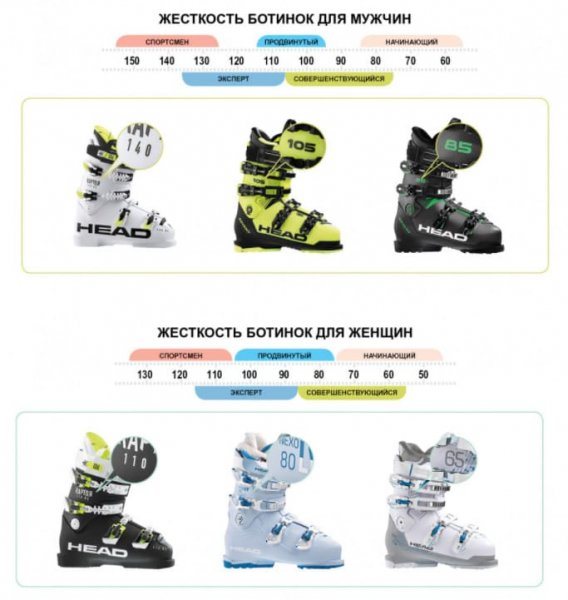
Production Features
The production of children's alpine skis is established in all large companies that are engaged in this type of activity, but there are many fewer classes of alpine skis for children than classes of alpine skis for adults.

This is due to lower requirements for such alpine skis and lower operating conditions to which these skis are subject.
However, manufacturers take safety issues equally seriously for all alpine skis, regardless of their purpose.
Therefore, in terms of safety, children's skis are very reliable and safe.
Fastenings and their standards
Most often, children's alpine skis are sold with adjustable bindings that can easily be adjusted to the size of the boot. It is important to understand here that the fastenings are necessary to be able to free the child’s leg in the event of a fall or collision, and therefore you need to pay attention to high-quality models that have high elasticity, which in turn prevents false alarms. When choosing fasteners, you should also pay attention to the actuation force indicator.
This indicator is designated by the letters DIN and has the following standards:
- DIN for child anchorages from 0.5 to 4;
- DIN for amateur, entry level 3-10;
- DIN for amateur, expert level - 5-15;
- DIN for professional racing up to 24.
Please note that the binding force is adjusted according to the size of the boot, the weight, height and age of the athlete, as well as their level of skating. Beginner athletes are recommended to set up their bindings at a specialized service center.
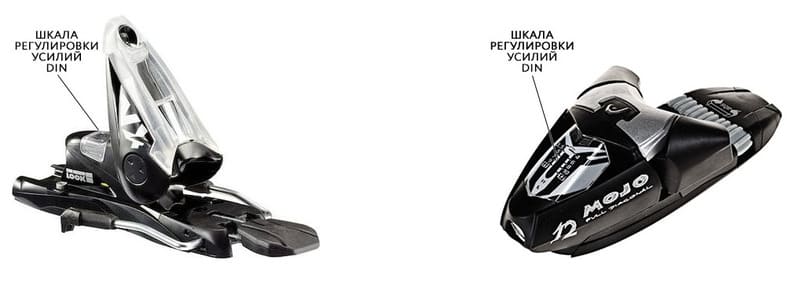
By skill
Before you go to the store to choose children's skis, you must objectively assess the child's skills, that is, what is his current level of skiing - beginner, intermediate or confident. It is not enough to select skis according to the child’s height using a table of children’s sizes - it is equally important to select the appropriate type of model, material of manufacture, as well as the shape of the structure, bindings and poles.
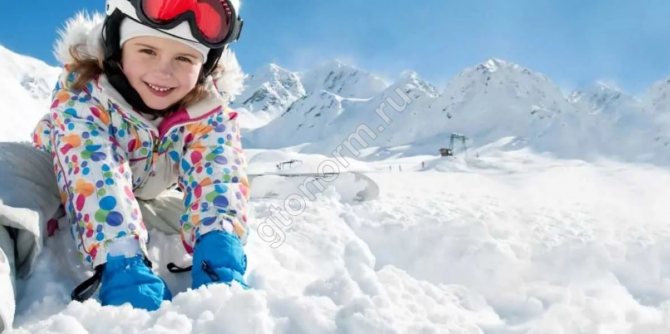
- Skis can be made of wood or plastic; the former glide less and are therefore more suitable for beginner skiers. It is more difficult to achieve high speed on them, which means the risk of injury is reduced. They are easier to maneuver around corners and easier to brake. When the skier begins to feel more confident, you can switch to plastic models - they are more durable, slippery and lightweight;
- The wider the pair, the easier it is to stand on it and start learning to ride, but be prepared for the fact that fast riding will not be possible for you;
- Don’t buy professional models for a beginner, which, moreover, cost a lot of money - start with amateur equipment. In the future, if the child wants to go skiing professionally, this issue can be returned to. Be prepared for the fact that children grow very quickly. Try to choose the correct ski length according to the child’s height; remember, every 2-3 years (or even more often) the equipment is updated.
- For initial training, you need to select a model based on height, marked “step” - it means adaptation to children’s skating. These skis don't roll back and don't need to be oiled.
Remember, to ensure better gliding, skis must be lubricated with a special ointment - it is sold in all sports stores.
How to determine your ski helmet size
The size of a ski helmet is an indicator of comfortable skiing. The helmet should not hang on the head, but at the same time it is not recommended that it squeeze the head and cause discomfort. Determining the appropriate ski helmet size is not difficult.
You need to take a measuring tape and measure the circumference of the child’s head above the ears along the forehead line, then determine the size:
- 45-50 cm – children's size S;
- 51-56cm – size Small;
- 55-57cm – size Medium;
- 55-61cm – size Large;
- 61-64 cm – size XL.
An important step when choosing a ski helmet is fitting. The helmet must be measured using the liner (not the hat). The helmet must be measured together with the goggles to assess their fit. It is important that the helmet fits tightly on your head, even when unfastened. It is not permissible to purchase a helmet for growth!
Helmet design, ventilation, weight
Helmet design, ventilation and weight are also important criteria when choosing a helmet. Today, manufacturers produce children's ski helmets in two designs:
- Hard Shell - This design features an outer shell that is injection molded from plastic. An inner polystyrene foam shell is attached to this shell. This helmet is considered the best for ensuring maximum child safety;
- In-mold - This design is characterized in that the inner polystyrene foam shell is covered with a thin layer of polycarbonate. This helmet is lightweight, but requires replacement after any serious impact, even if there is no visible damage to it.
Also pay attention to the presence of ventilation. Modern helmets are equipped with special ventilation holes that regulate the temperature inside the protection. Thanks to these holes, the child’s head does not sweat, which means the risk of colds is reduced. On sale you can find helmets with visors. This is additional protection from cold wind, snow and branches. When purchasing, check the fastenings; they should be reliable, but at the same time easy to operate.
Masks and sticks
Masks and poles also need to be selected according to size. The mask must be tried on together with the helmet. A properly fitted mask should fit tightly with the helmet. Please note that there should not be a large gap between the goggles and the top edge of the helmet; the helmet should not put pressure on the mask with the visor, this will lead to the goggles slipping and fogging.
There are also criteria for choosing sticks. Their length is selected according to height.
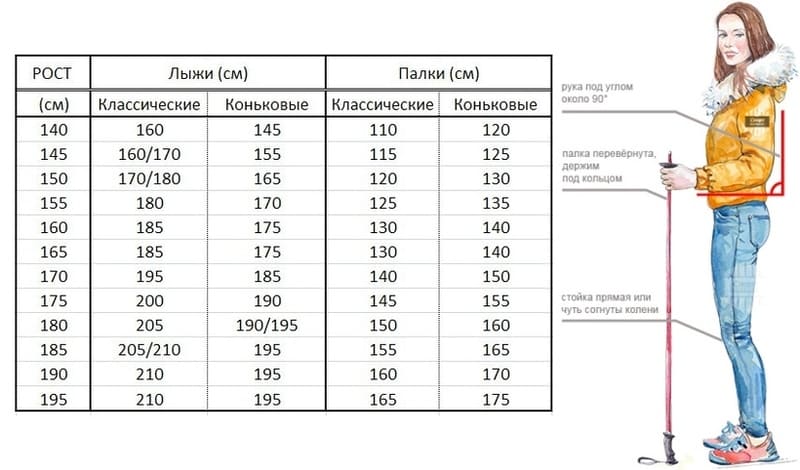
You should also pay attention to the design of the poles. Curved and straight poles are available for sale. Curved ones are designed for downhill racing. The built-in bend increases aerodynamic performance and increases the speed of the athlete. If a child is just starting to ski, he will not need such poles; moreover, they will create unnecessary discomfort.
Before choosing skis for your child and other equipment, pay attention to the manufacturer. Remember, when purchasing equipment, it is better to give preference to well-known manufacturers, such as HEAD, ATOMIC, VOLKL, VIST, K2, etc. Their products are much more expensive, but provide maximum safety.
How to choose poles, bindings and boots
So, now you know what length to choose skis according to the height of a child 5 years old and older, you understand the types and brands of models, but there are several more factors that influence the final choice.
Sticks
You don’t have to buy them for very young children - the most important thing is to teach the kids how to stand on skis, to give them the opportunity to experience the skill. Skating without poles will help you learn to maintain balance and balance. The tip of children's poles usually has the shape of a ring - this increases the area of support on the snow surface.
Fastenings
To choose the right skis for a 6-year-old child, pay attention to the bindings - their degree of rigidity should be moderate. The best option is a metal base and semi-rigid straps. Such fastenings are not too rigid, they do not constrain the feet, but do not fly off either. Make sure that the lock is elastic and not tight - this way the child will be able to take off and put on the equipment independently.
Ski shoes
Now you know how to choose the right skis and poles for your child, the next step is to analyze ski boots - what should they be like and how important is their role compared to the rest of the equipment?
The level of comfort of a small skier depends on the boots - they should be warm, dry and comfortable. Try to choose shoes with good thermal insulation. The ideal option is to line the interior of the boots with a membrane layer that removes moisture but does not release heat. In such boots, the baby will not sweat or freeze, and therefore will never get sick. Of course, ski boots must fit - not too big, and not too small. The fastener should be comfortable and easy - preferably in the form of a clip.
We hope,” after reading our article, you will be able to choose children’s skis based on height, age and other criteria. And also, you will not have any difficulties when choosing the rest of your ski equipment. In conclusion, we will give the main advice - do not look at the price tag, reviews or reputation of a particular brand. Always focus on the child’s feelings, his interests and desires. If he likes the “little blue” skis, they suit him in all respects and the price suits you - buy them. After a couple of years, you will still replace them with larger ones. And today, support the child’s interest, do not let the sprouts of the desire to learn how to ski wither without releasing the first leaves.
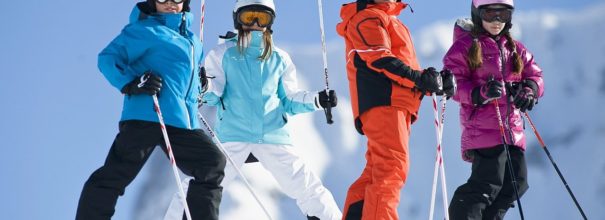
In the winter season, skiing is a favorite sport for many. In addition to the fact that skiing is associated with a long stay in the fresh air, it also provides physical activity, strengthens muscles and develops endurance. Yes, it’s just fun and great to go into the winter forest with the whole family for an unforgettable experience. In order for your child to love such trips, you need to choose the right ski kit for him.


